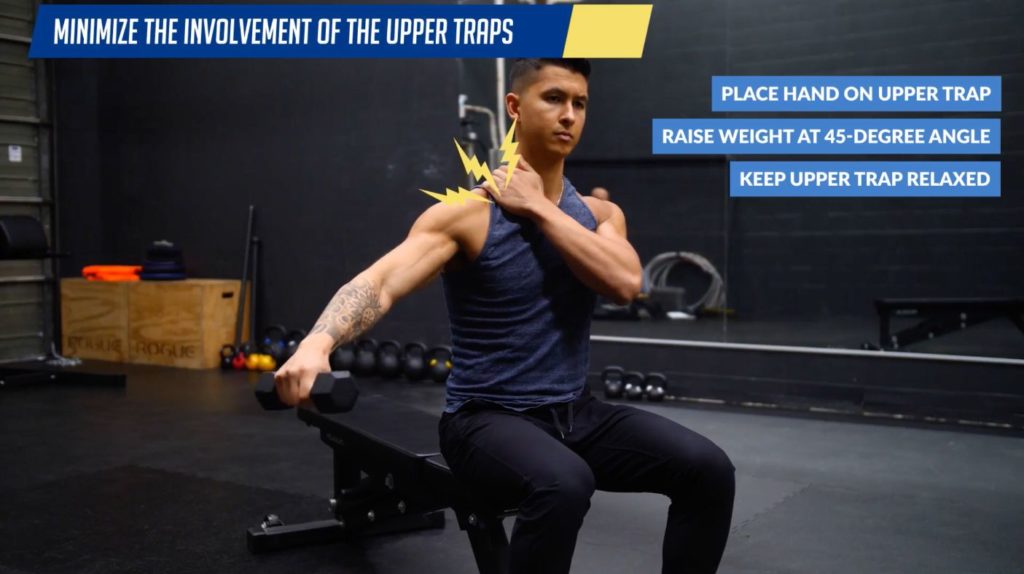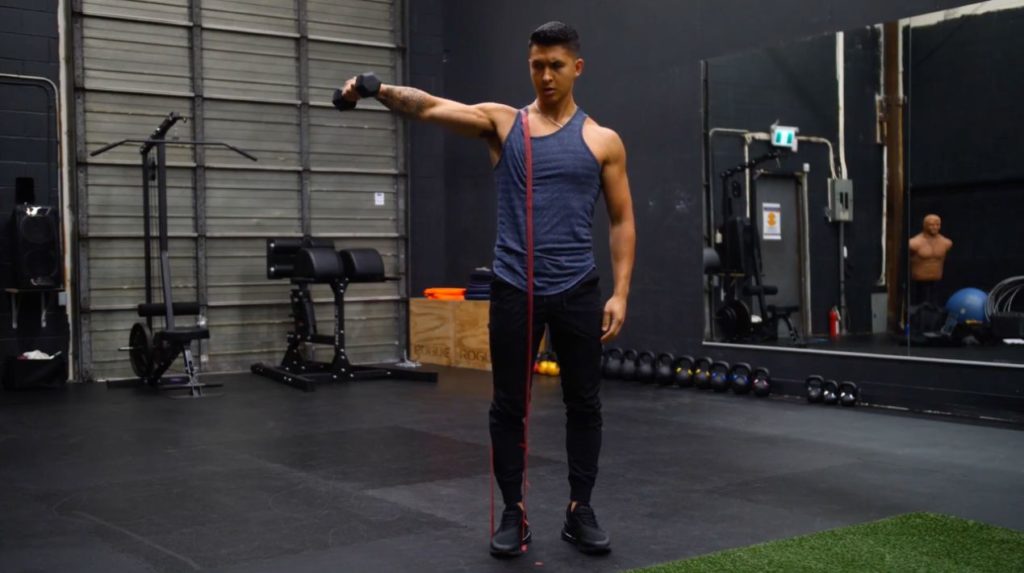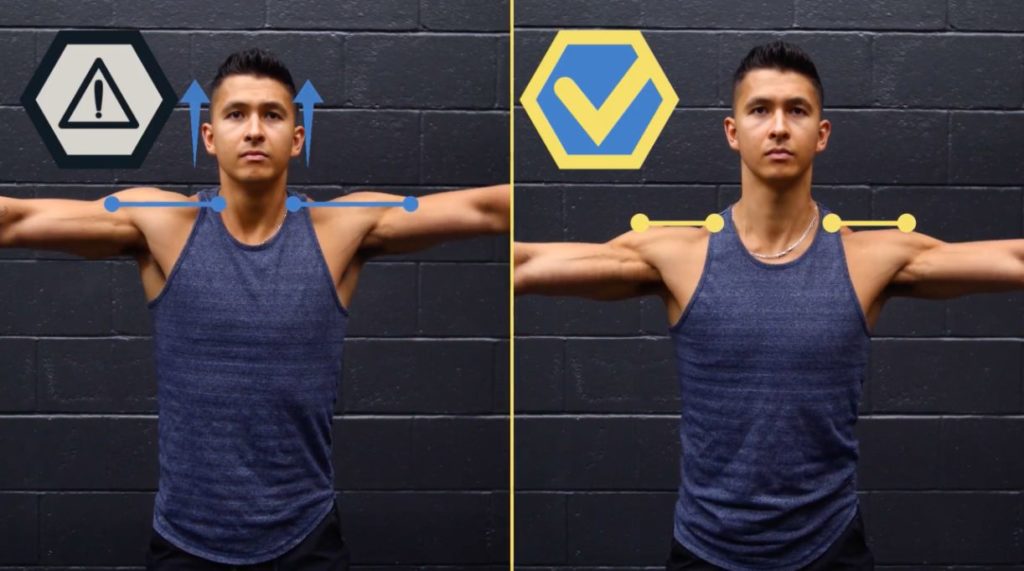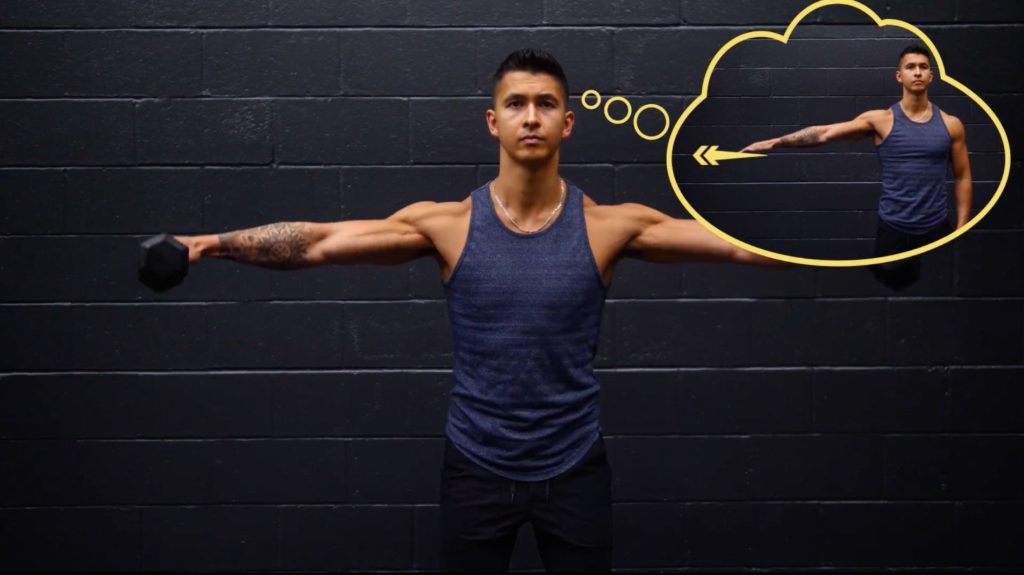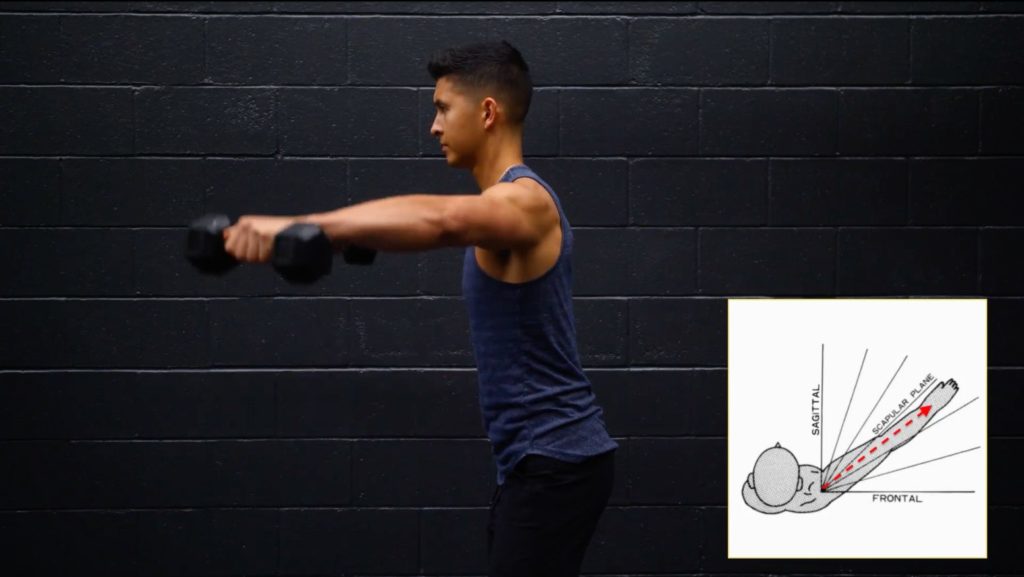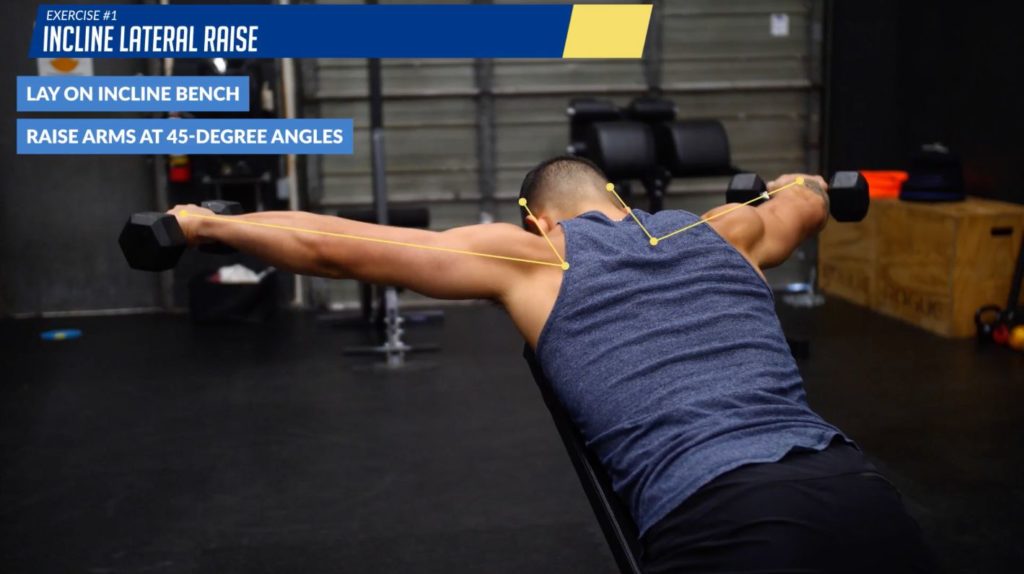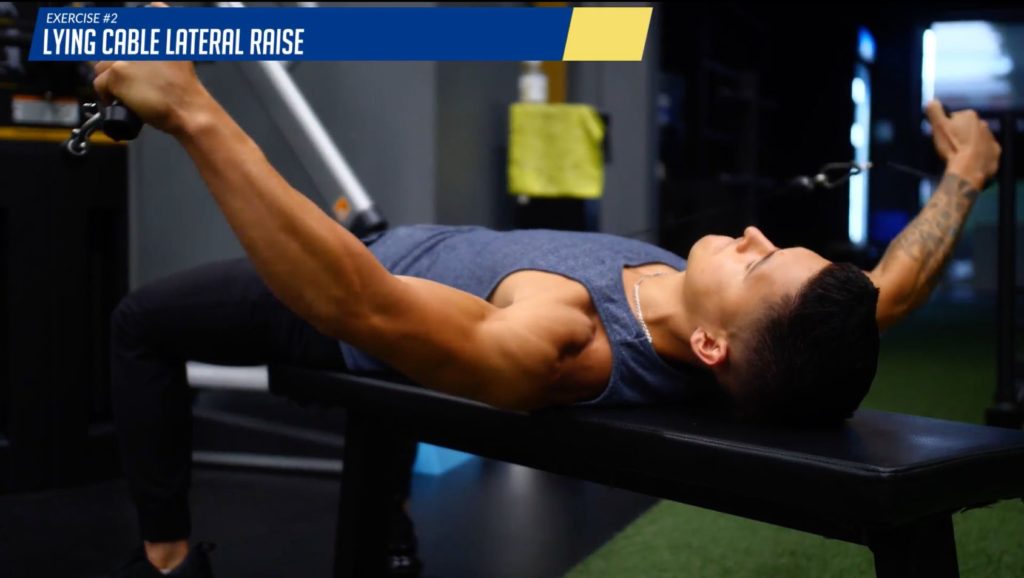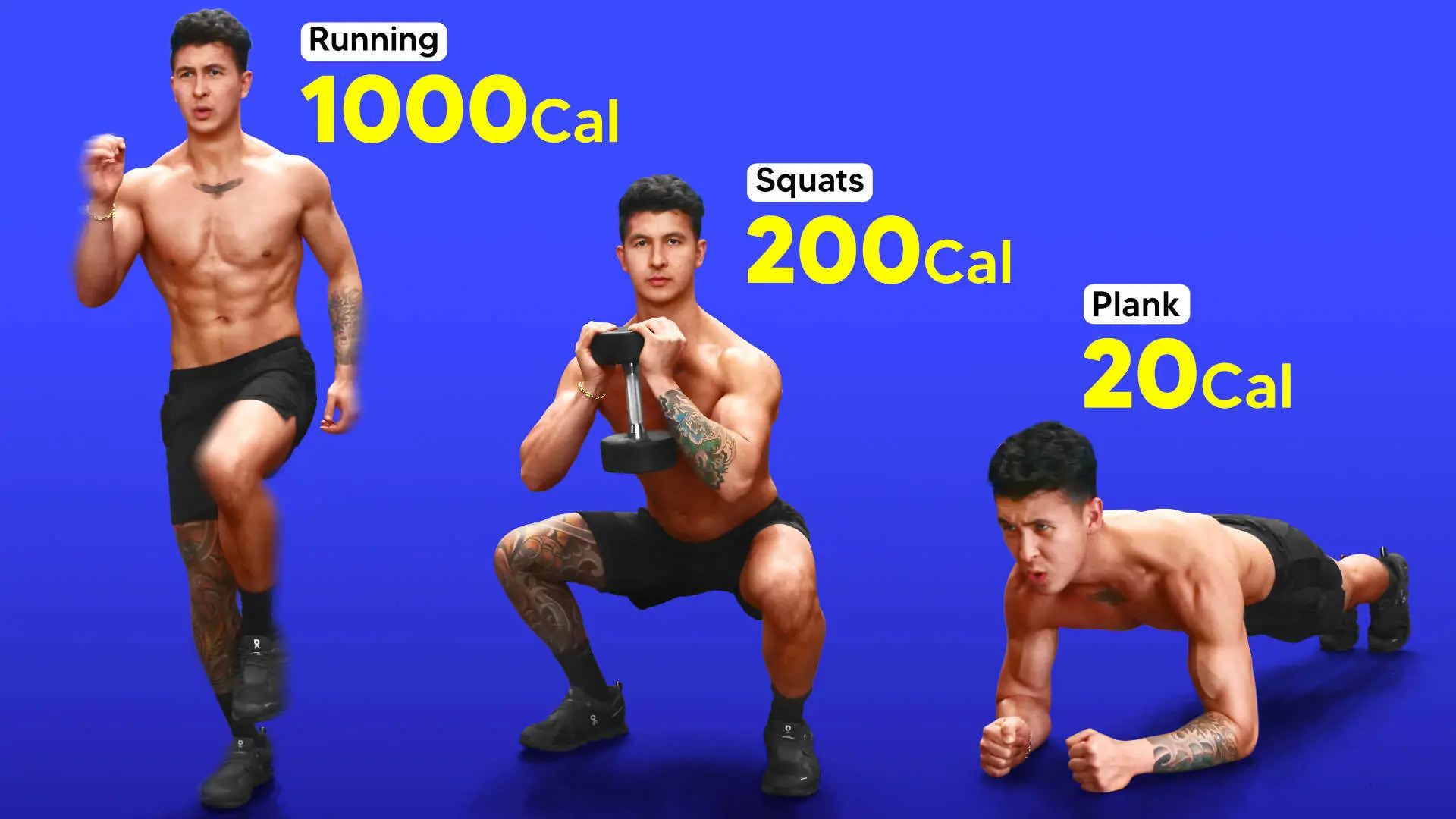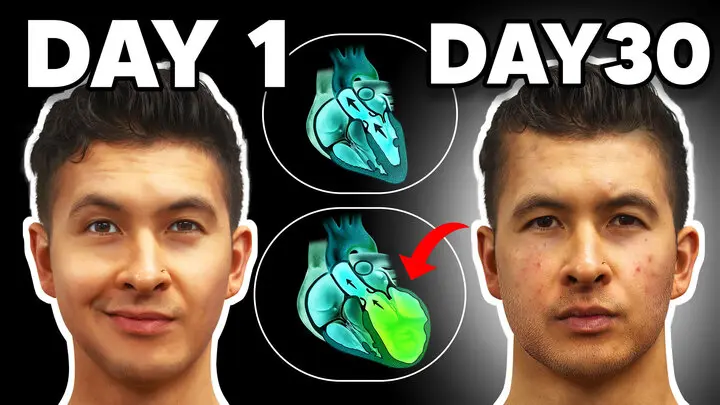Why Your Delts Aren’t Growing (ONE FIX!)
Always googling 'How to build shoulders' on the Internet? You've stumbled upon the right article. Here, I show you how to activate and grow your side delts so you build massive shoulders.
The delts, for many, are an extremely stubborn muscle group to develop. That said, because of all the pressing we do, most of us have no problem developing our front delts. It's the side delts where we struggle. That's despite the countless 'How to build shoulders' queries typed into Google. And this is frustrating. Because the side delts are precisely the region of the delts that gives us that wide, tapered look most of us are after.
But in theory, training the side delts is actually quite simple. Lateral raises are generally the most effective option to develop this area. This has been shown time and time again. And in fact, most of you reading this likely already do some form of a lateral raise in your routines.
But why are you still not seeing the growth you're after then? And why are you constantly wondering how to build your shoulders? Well, it all has to do with your execution of this seemingly simple movement.
By the way: this applies to all muscle groups you're training - and are hoping to grow. That's why I've designed every BWS program to help you really understand the anatomy of each and every muscle group you're trying to target, so you know the optimal execution of every exercise included in your training program. And best of all? It's all rooted in science. For more information on how BWS programs can help you to look better - FAST:
Click the button below to take my analysis quiz to discover the best program for you:
↓
Many Lifters Execute The Lateral Raise Wrongly
Very rarely do we see lifters in the gym actually execute this movement properly. And, instead, they end up training other muscle groups instead of the target: the side delts. That's because lifters usually use too much momentum and swing front back and side to side during the movement.
The Upper Traps Steal Tension Away From The Side Delts
In addition to that, one of the lesser-known culprits that we don’t even realize is taking over is the upper traps. There are many reasons why the upper traps tend to steal tension away from the side delts. And of those, the most important ones include:
- The anatomy and function of this muscle
- The muscles' overactive state from us being in a hunched over position most of the day
To better illustrate this, as shown here, the upper traps function to elevate the shoulder. Whereas the side delts function to raise the arm out to the side.
So what a lot of us will do during our lateral raises, is we’ll shrug our traps up to assist the weaker side delts with raising that weight up. This happens especially during that initial and very last part of the rep.
When this happens, yes, you’re still moving the dumbbell from the same point A to point B. But the side delts now become far less involved. And are never put in their fully shortened position as they should be in this movement.
Minimize Upper Traps Involvement To Maximize Side Delts Growth
And the problem is that many of us now just do this subconsciously. And, over time, have developed this pattern of automatically firing the upper traps whenever we raise our arms out to the side.
Now yes, the traps will inevitably be involved to some extent during your lateral raises. But if your main goal is to grow your side delts with this exercise – which it is – then you need to minimize the involvement of the upper traps. And thus, maximize shoulder growth.
So, how exactly can we do this?
How To Minimize Upper Traps Involvement To Build Shoulders
To start, we want to use a mindful exercise. This exercise will help teach your body to get out of the habit of recruiting the upper traps whenever you raise your arms to the side.
How To Perform The Mindful Exercise
To perform it, take a seat. Hold a 5lb dumbbell in one hand or even just use no weight at all to start out. Place your other hand on your upper trap. All I want you to do now is very slowly raise the weight up at about a 45-degree angle in front of you. But as you do so, feel your upper traps to make sure they remain soft and relaxed. Don’t tense up.
As soon as they start to tense up, get back to the starting position and try again. So as you raise, think about:
- Actively pushing your shoulder down AND
- Depressing your traps
If you stand up and place a band around your traps and feet, this can help you know what this should feel like. The band will help actively press your traps down as you raise.
The main goal of this exercise is to be able to do a full rep up to parallel successfully without tensing up the upper traps. Many of you even with very light weights will only be able to do a quarter of the raise in this fashion before your traps really start kicking in. This is perfectly fine. But just keep practising. Really focus on gradually increasing this range.
So, implement those as needed, keep practising, and gradually do this with more load. Then when you’re ready, move to the standard dumbbell lateral raise with two arms raising simultaneously. While still applying the same tips and mindfulness, of course.
Additional Tips And Cues To Experiment With
And as you do so, there are a few additional helpful tips and cues that you can experiment with. These can help you further maximize side delts activation while minimizing the involvement of the upper traps:
- Imagine that you have a level bar sitting on top of your delt right where the delt meets the trap. So try not to let that bar push up as you raise your arm up. The higher your hand gets through the raise, the more you’ll want to consciously push your shoulder down. This is to prevent it from raising that invisible bar.
- Don't just think about raising the weight up. This tends to get the traps involved. Instead, think about pushing the dumbbell out to your side as much as possible. The weight should only go up as a result of you actively pushing sideways.
- And lastly, here are just some general tips. Grip the dumbbell lightly. Experiment with a thumbless grip. And raise the weight in the scapular plane which is around 45 degrees in front of your body. These will all tend to help you maximize side delts recruitment.
What many of you will now find is that by involving the traps considerably less, your weaker side delts will be much more involved. And will start to fatigue very easily. As a result, you won’t be able to do near as much weight as you could before.
This is a good thing. And is expected, since we’re now actually providing tension to the target muscle rather than compensating with other muscles. So, take your ego out the door. Use lighter weights. And avoid falling back to the old patterns that we just worked on correcting.
Other Lateral Raise Variations To Build Big Shoulders
Now, in addition to this, there are other lateral raise variations that you can experiment. These manipulate your body position to help minimize the involvement of the traps.
Exercise 1: Incline Lateral Raise
The first one is something I’ve shown in past articles, like this one. And is none other than the inclined lateral raise. This is where you lay on an incline bench and raise your arms up at about a 45 degree angle. The bench helps provide you with a little more stability. And the resulting body position you’re in puts the upper traps in a less favourable position.
Which both result in more side delts involvement and less upper traps. Again though, go light on these. Many of you will find that even just 5 or 10 lbs, when executed properly, is more than enough weight.
By the way, if you’re someone who enjoys learning about the ‘whys’ of exercise selection, you’re absolutely going to fall in love with our 3-on-1 coaching program. My team of experts here at BWS – and I – will always take the time to explain the rationale of an exercise included in your personalized training program. Find out more about how we can help you achieve your dream physique below:
Click the button below to find out more about the 3-on-1 coaching program:
↓
Exercise 2: Lying Cable Lateral Raise
The second exercise you can try out is the lying cable lateral raise. As shown in a study assessing the activation of the upper traps in different body positions, lying down during upper body movements helps decrease the upper trap’s activation as a postural muscle.
That's because it doesn’t have to work against gravity as it has to during the standing lateral raise. So by performing this lateral raise lying down with cables, we’re able to favour the side delts a little more. While, at the same time, providing a constant resistance through the whole range of motion of the side delts. But even here, focus on actively depressing your traps as you raise your arms out to the side every rep. Just as we did earlier.
How To Build Shoulders With Better Side Delts Activation: Action Plan
So, to sum this all up into an action plan for you, what I’d suggest is start with the first mindful exercise that we did. Replace your lateral raises in your routine with that drill for the time being. Master that while increasing the load very gradually over time. And then once you’re ready, you can transition to the standard lateral raise. Of course, that's given that you’re able to successfully perform your reps with minimal compensation of the upper traps.
Then from here, you can experiment with some of the other exercises I mentioned. And take a look at some of my other delts articles (e.g. the best shoulder workout at home) to implement some more variation and volume for your delts once you’re ready to do so.
The main thing we want to avoid though is getting back into your old pattern of excessively recruiting the upper traps whenever you raise your arms. So take it slow and use lighter weights. Yes, there is a time and place where “cheating” can be useful with your lateral raises. But we need to first get you to a point where you can actually perform the movement with minimal compensations elsewhere.
Takeaway
But all in all, you need to realize that if you’re struggling to grow certain muscle groups, then odds are it’s a result of the various compensations that you’re unknowingly making whenever you attempt to train that muscle.
And for a step-by-step program that addresses this by using science to not only show you what to workout week after week, but then shows you exactly how to perform each and every exercise for maximal activation and growth while pairing this with a nutrition plan to support your recovery, then:
Click the button below to take my analysis quiz to discover the best program for you:
↓
I hope you enjoyed this article! Don’t forget to give me a follow and connect with me on Instagram, Facebook, and Youtube as well, in order to stay up to date with my content.






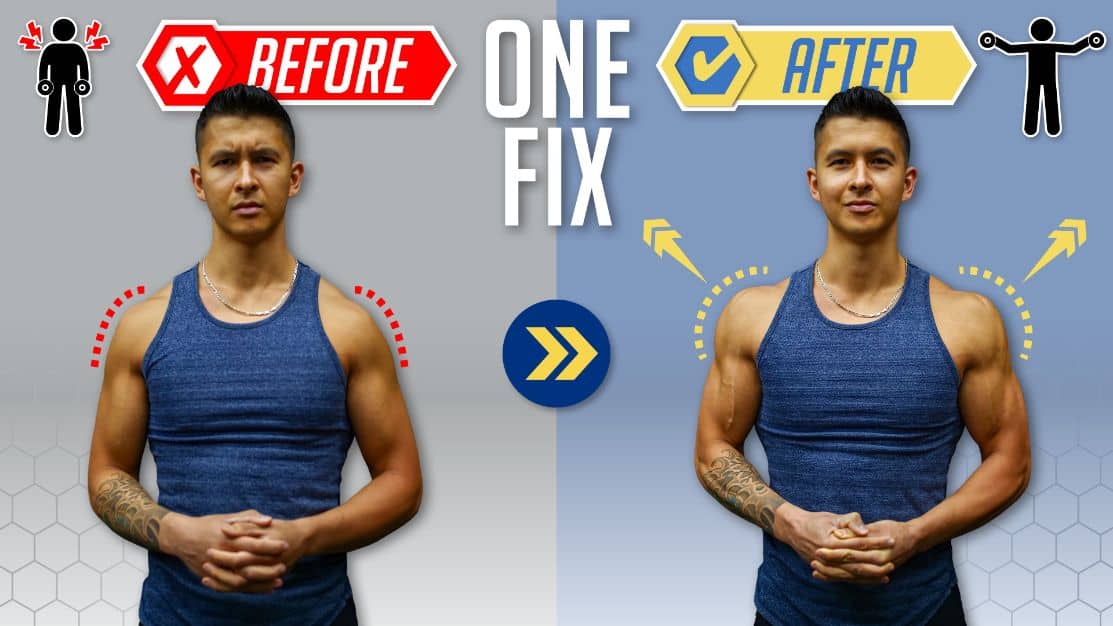
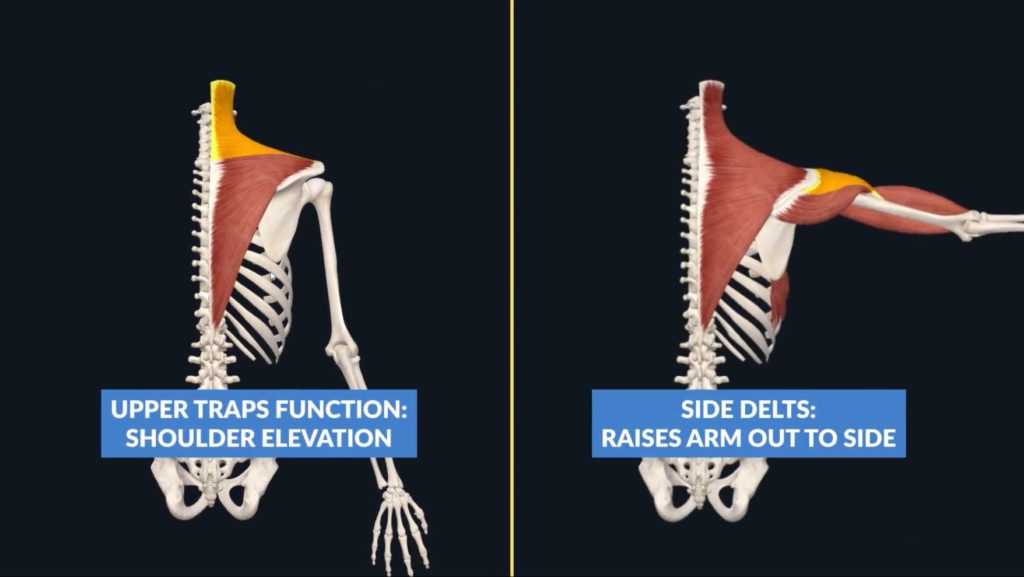 So what a lot of us will do during our lateral raises, is we’ll shrug our traps up to assist the weaker side delts with raising that weight up. This happens especially during that initial and very last part of the rep.
So what a lot of us will do during our lateral raises, is we’ll shrug our traps up to assist the weaker side delts with raising that weight up. This happens especially during that initial and very last part of the rep.